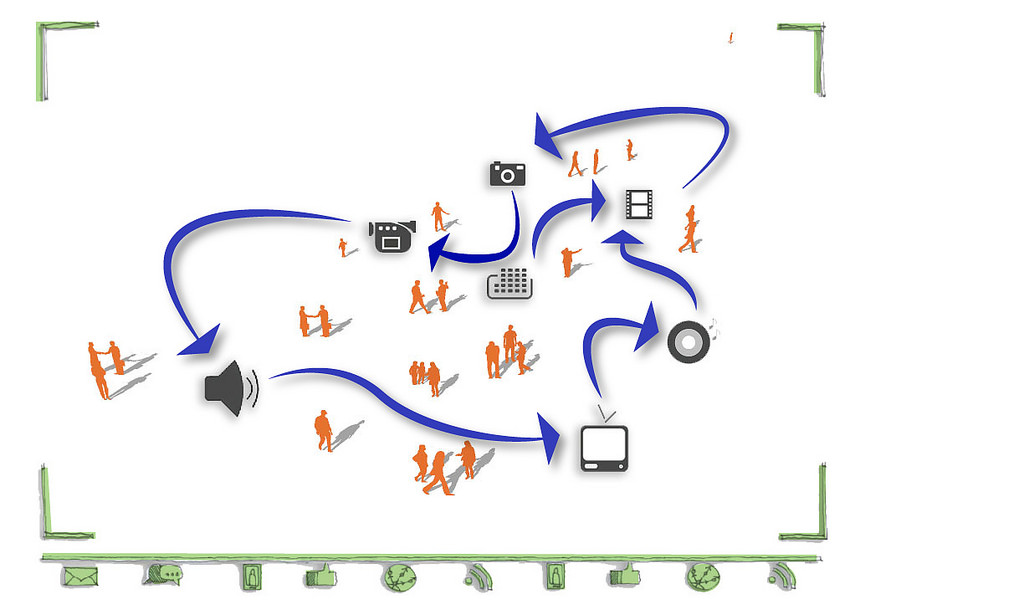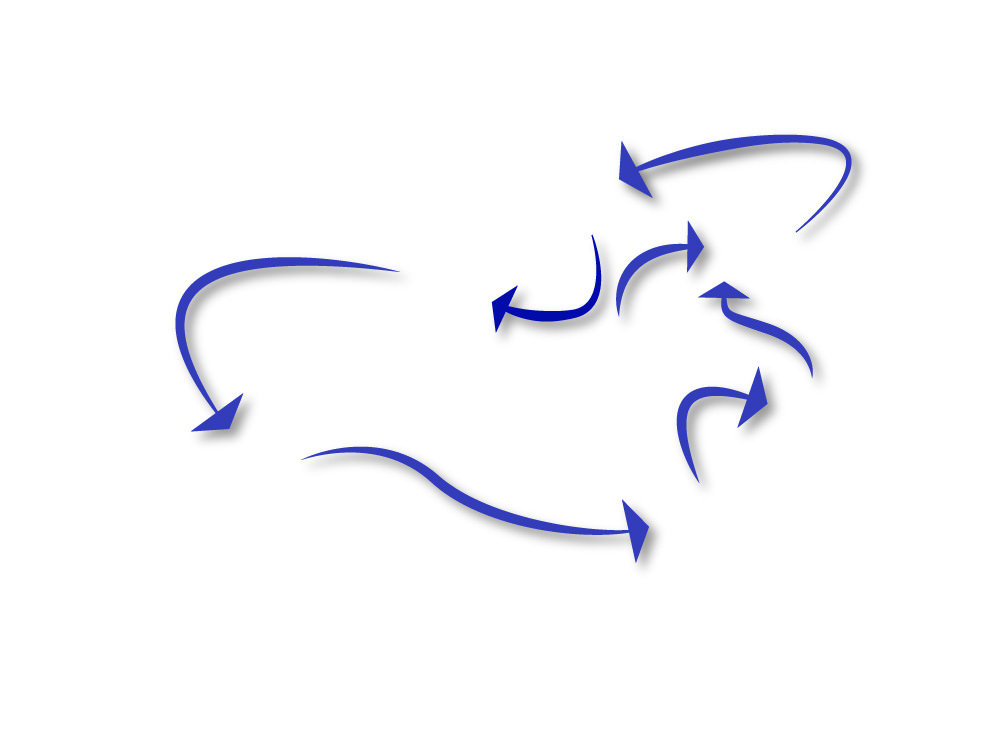
I am beginning to realize that I am bit enamored with redefining or repositioning strands of learning that I hold dear. I am also realizing that I am beginning to gravitate towards conceptual or theoretical positions to explain these alterations, perhaps a natural byproduct of my thesis inexorably and glacially drawing to a close. So in my last few publications as well as my thesis (which should explain the radio silence here on this blog), I have been drawing out what I see are natural extensions or redefinitions of mobile learning and open learning. I suspect if someone asked me to position myself and my research, this is where I would most likely to stake my claim so it seems natural enough that I want to contribute to them.
These are the publications in question where some of these arguments are beginning to emerge. These arguments receive their fullest treatment in the thesis itself (almost a chapter), but that will have to wait as I am not submitting until December.
- Gallagher, M. (2015 forthcoming). Activating (Korean) Literature and Repositioning Mobile Learning: Geolocating Yom Sang-seop’s Three Generations (1931). Media Education: Studi, Ricerche, Buone Pratiche.
- Ihanainen, P. & Gallagher, M. (2015). Learning in the Open. Futura, Finnish Society for Future Studies, 2015 (1).
- Gallagher, M. & Ihanainen, P. (2015). Aesthetic literacy: observable phenomena and pedagogical applications for (mobile) lifelong learning. European Journal of Open, Distance, and E-Learning, 2015 (1).
Mobile Learning
So in these I extend a repositioning of mobile learning as initially advanced by Sharples et al (2007) and link to Kress & Pachler (2007), all while using Park (2011) as a means of identifying how this might be made visible. Mobile learning is in dire need of a repositioning as it still struggles to shed its technologically deterministic origins. I am looking to evict technological and logically circular definitions (mobile learning as any learning that takes place with mobile technology, discussed in Kukulska-Hulme et al., 2005) as well as geographically or temporal definitions of mobile learning (learning that takes place anywhere or anytime, a familiar trope in early mobile learning literature, discussed in Yahya et al., 2010). These technological, geographical, and temporal definitions contribute but are not the crux of the argument.
Mobile learning as defined in this paper will assume the following:
- Learning occurs across multiple contexts, amongst people and interactive technologies (Sharples et al., 2007); by focusing on mobility, we reveal the movement across contexts, from informal to formal, from public to private, across time and space contexts. We also acknowledge that context is being persistently generated through activity and interaction.
- Learning encapsulates high and low states of transactional distance (Park, 2011); activity will move towards and away from the university or formal learning institution as ‘center’ of learning (transactional distance). We must respect that movement. We must also respect movement between formal, informal, individualized, and socialized states of activity. The broader system of activity, a constantly evolving and ephemeral structure, must be prioritized over the outcome or organization.
- Learning is mobile in both material (physical) and cognitive form; the transformation of habitus makes visible the mobility of cognitive activity (Kress & Pachler, 2007)
- Learners “artfully engage with their surroundings to create impromptu sites of learning” (Sharples et al., 2007)
That activity might render itself as the image below suggests: a series of movements aggregated from a series of often disparate activities.
So, still some spatial distinctions, but more of a cognitive sort. I don’t address mobility itself (most notably Urry, 2012), but rather consider it a byproduct of the cognitive transformation. The activity as presented above are essentially cognitive maps, constellations of discrete activities that might aggregate into a learning trajectory (Wenger, 1998). The mobile technology itself isn’t a neutral element in this equation; it structures and evidences the activity taking place, like a frame or laminate might be used to bind information in a particular context.

Open Learning
Pekka and I have always seen open learning more broadly than traditional definitions might allow for. So in our last few publications, we have spent a great deal of time in articulating this vision of what we see open learning to be. More specifically, what we think open learning needs to be to become the force we are convinced it can be. The following picks up where the definition of mobile learning advanced earlier leaves off, namely identifying the need to follow learning wherever it wants to go, from informal to formal states and beyond.
A discussion of the impact of learning in the open would not be complete, or particularly effective, without addressing the educational landscape where formal learning takes place.The broad categorization of learning into formal and informal states is not designed to simplify a complex continuum of learning approaches, in particular self-regulated learning (Dabbagh, Kitsantas, 2012). Rather it serves to illustrate the broad range of spaces that learners routinely move through without much concern for boundaries or classifications.
It is our belief that learners pass across the “semipermeable membrane” between informal and formal learning regularly (Potter, 2013), particularly in fields where there are professional applications of formal learning outcomes. For the purposes of learning in the open, whereby learning objectives are often ambiguous or emergent from the confluence of variables in the environment itself, it is our belief that informal spaces, or open spaces, are the wellspring of formal learning structures. As such, it is important that formal learning structures, from curricula to pedagogy to stated outcomes, reflect the processes by which meaning is generated informally.
It is our belief that many formal learning structures, often with an emphasis on the consistency of learning outcomes, summative assessments, and replicability in line with mass systems of education, do not emphasize informal, open spaces as the wellspring, or the progenitor, of formal learning. We believe that open spaces are the testing sites of any formal learning structures or pedagogies; they are the environments in which experience and knowledge is gleaned from hypotheses, hunches, and activity. As such, the pedagogies designed to enact learning outcomes in formal spaces are, by their very nature, irreconcilable or conflictive with learning in the open spaces described in this paper. They disregard what Marsick & Watkins (2001) refer to as incidental learning, but what we describe in this paper more broadly as an alignment for learning in open spaces. This type of learning in open spaces requires an agility to identify, align, and engage the environment as a learning activity without predefined learning outcomes or assessments. We believe this is not represented in the pedagogies of formal spaces; we also believe this is a problem.
So again we focus on transformation of open space to learning space. Again, we see learning as a cognitive transformation and again we see the primacy of the informal over the formal (or at least a need to unfetter activity flow between the two).
Bibliography
- Kress, G. & Pachler, N. (Eds) (2007). Mobile Learning: Towards a Research Agenda (2007). WLE Centre, Occasional Papers in Work-based Learning 1.
- Kukulska-Hulme, A., Evans, D. & Traxler, J. (2005), Landscape study in wireless and mobile learning in the post-16 sector. JISC Technology and Standards Watch. Retrieved April 24, 2013 from http://www.jisc.ac.uk/whatwedo/programmes/elearninginnovation/landscape.aspx.
- Park, Y. (2011). A pedagogical framework for mobile learning: Categorizing educational applications of mobile technologies into four types. The International Review of Research in Open and Distance Learning, 12(2), 78-102.
- Potter, J. (2013). ‘Media education and the new curatorship: principles and entitlement for learners.’ Media Education Research Journal 3(2), 76 – 87.
- Sharples, M., Milrad, M., Sánchez, I. A., & Vavoula, G. (2007). Mobile learning: Small devices, big issues, in ‘Technology Enhanced Learning: Principles and Products’.
- Urry, J. (2012). Sociology beyond societies: Mobilities for the twenty-first century. Routledge.
- Wenger, E. (1998) Communities of Practice: Learning, Meaning and Identity. Boston: Cambridge University Press.


[…] I am beginning to realize that I am bit enamored with r… […]